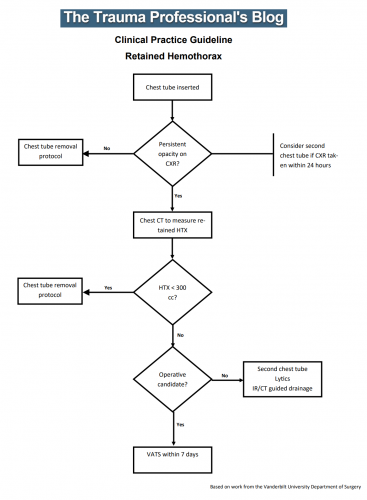A short while ago I wrote about the proper nomenclature of the new or novel oral anticoagulant medications that are replacing warfarin in patients with atrial fibrillation (click here for details). Cut to the chase, the consensus seems to be that they should be called direct oral anticoagulants or DOACs.
These medications strike fear into the average trauma professional, primarily because there is no easy way to reverse them as there is for warfarin. We are finally accumulating enough experience with them to start to see the bigger picture with respect to complications and mortality. Today, I’ll begin the discussion with a series of three abstracts regarding these drugs.
The AAST conducted a multicenter, prospective, observational study that collected DOAC trauma patient information from 15 centers. They reviewed four years of data, specifically examining the use of reversal agents and mortality.
Here are the factoids:
- A total of 606 patients were enrolled. They were generally elderly with an average age of 75.
- Most were taking one of the Factor Xa inhibitors (apixaban, rivaroxaban, edoxiban), while just 8% were taking the direct thrombin inhibitor dabigatran.
- Only 1% of patients received a reversal agent (prothrombin complex concentrate (PCC) 87%, Praxbind (12%), and Andexxa (1%)
- Those receiving reversal tended to be older than the average and had more severe head injuries
- Patients who were reversed with PCC had no change in mortality using a regression model
- Patients reversed with Praxbind or Andexxa had a 15x higher probability of mortality
The author’s conclusions merely restated their results.
This is fascinating information. Unfortunately, this study was not designed to provide a comparison with patients taking warfarin. However, my next two abstract reviews will cover this very topic.
There are two interesting tidbits here. First, reversal was only carried out in about one in eight patients. Why is this? No protocol? No product? Too pricey? Patients not hurt badly enough? And how would that be judged anyway?
The second is that reversal with PCC seems to be benign, but use of one of the specifically designed reversal agents really jacked up mortality. These agents (Praxbind and Andexxa) are very expensive ($3.5K and $50K respectively). Furthermore, there are no studies anywhere that show their effectiveness. This one actually seems to show they might be dangerous.
The devil is in the details. Here are my questions for the presenter and authors:
- Were there any guidelines for reversal? This is key because if not, the statistics just describe “how we do it.” Yes, you can tease out higher ISS or AIS head as potential reasons, but were there directions regarding this built into the study protocol?
- Do you have any data on the success rates of PCC reversal? Were there provisions to demonstrate lesion stability vs progression after administration?
- Do you have an impression of why the tailored reversal agents seemed to be so deadly? Were they used as a last resort due to cost. Did the centers have a hard time getting it or authorizing its use?
This abstract could be a gold mine!
Reference: The AAST prospective, observational, multicenter study investigating the initial experience with reversal ofnovel oral anticoagulants in trauma patients. AAST 2019, Oral Paper 58.




